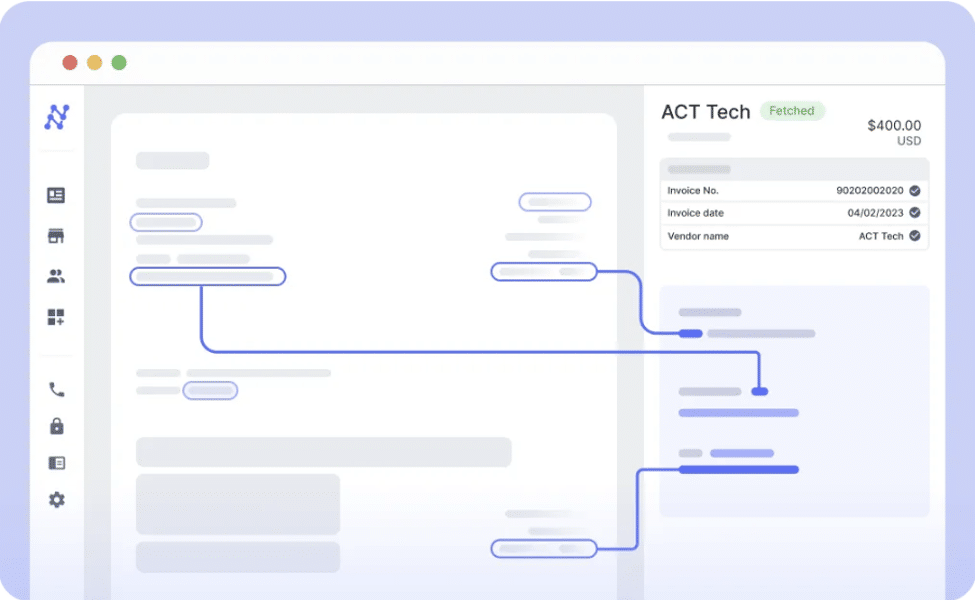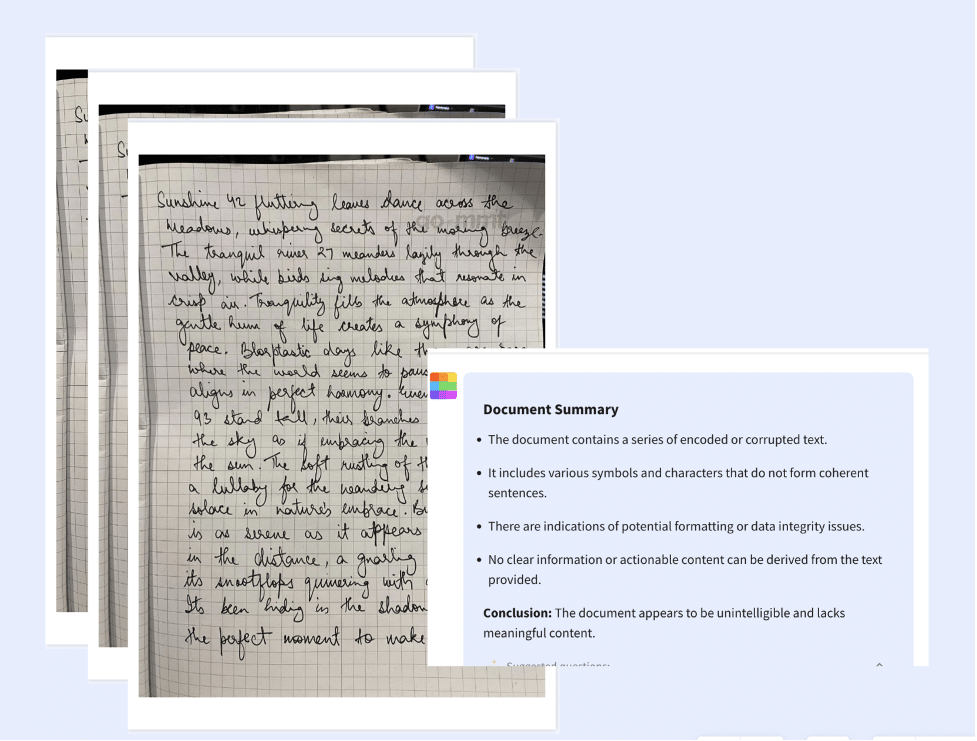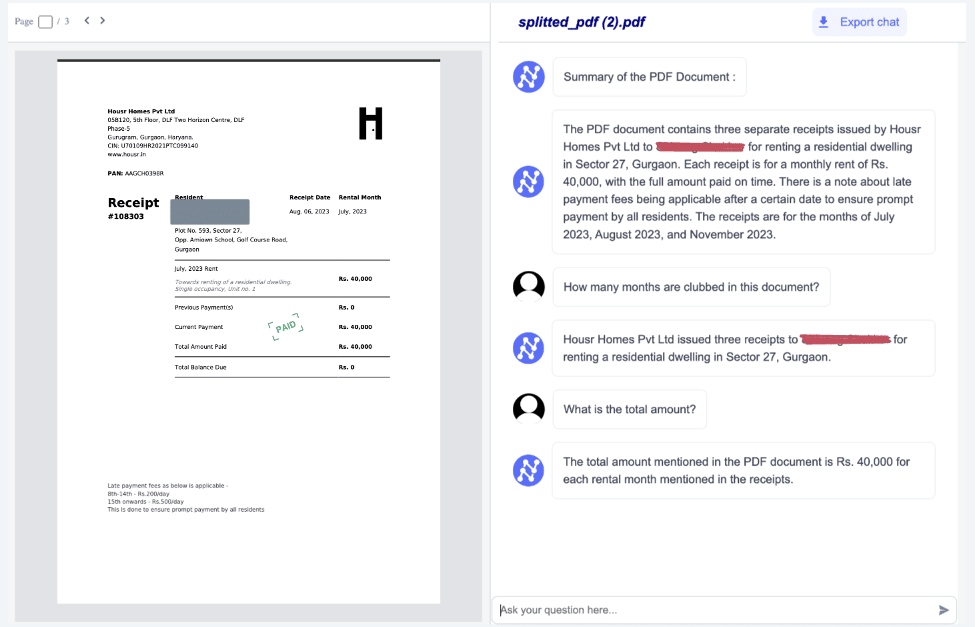Introduction
In today’s fast-paced business environment, organizations are often overwhelmed with large volumes of documents, ranging from contracts and invoices to reports and forms. The ability to extract relevant information quickly and accurately from these documents is crucial for efficient decision-making and optimizing workflows. Whether it’s pulling key details from legal agreements, summarizing complex reports, or organizing financial data, finding a seamless solution is essential.
Thanks to advancements in artificial intelligence (AI), particularly in natural language processing (NLP) and machine learning, extracting insights from PDFs and other document types has become more accessible. Newer AI tools are now capable of not only reading and interpreting text but also understanding and extracting key data from images, such as scanned documents. These tools eliminate the need for manual data entry or using separate image processing software. With AI’s growing ability to handle a variety of document types, businesses can now streamline their document management processes, leading to better efficiency and accuracy.
AI Solutions for Efficient Data Extraction and Document Management
AI-powered tools are transforming how businesses manage documents, allowing for efficient data extraction and providing valuable insights. Below are a few examples of how these tools can enhance modern day document management:
1. Data Extraction and AII Insights
AI tools don’t just pull out information—they go further by analyzing and organizing it to provide actionable insights. Whether you’re extracting key value pairs like names, dates, or financial data from documents, AI simplifies the process and enhances accuracy. This is particularly useful for handling contracts, invoices, or legal documents. For instance, using this PDF AI tool, one can efficiently extract insights and key information of thousands of documents within seconds.

2. Document Summarization
Reading through lengthy documents to find relevant information can be time-consuming. AI-powered document summarizers generate concise summaries, helping users focus on key details quickly. Whether it’s a business report, legal document, or research paper, these tools can save hours of work. PDF summarizer is an excellent example of how AI can streamline the process, along with other options like the Smallpdf PDF Summarizer, which delivers summaries in seconds.

3. Interactive Document Tools
AI is not limited to extraction and summarization—interactive document tools let users engage directly with their files. These tools enable users to ask questions and receive responses based on the document’s content, making navigation easier, especially for complex or large documents. Examples include ChatPDF, which allows for seamless interaction, and tools like Chat with PDF tool that offer similar functionality.

Practical Application of AI-Powered Document Tools
While the theoretical benefits of integrating AI-powered document tools into your workflow are well-known, the real magic happens when these tools are applied to solve specific challenges. Here’s a practical look at how integrating AI document tools can address common issues and streamline operations:
1. Automating Invoice Processing for Financial Efficiency
Imagine your business processes hundreds of invoices each month. Manually entering data from these invoices into your accounting system is time-consuming and prone to errors. By integrating an AI-powered data extraction tool with your accounting software, you can automate the entire process. For instance, when an invoice is received, the AI tool extracts key details—like amounts, dates, and vendor information—and inputs them directly into your accounting system. This not only speeds up processing but also reduces errors and ensures that all financial data is accurately recorded.
2. Streamlining Legal Document Review with AI Summarization
Legal teams often need to review extensive contracts and case files. Manually summarizing these documents can be a significant burden. By integrating an AI-powered document summarizer with your document management system, you can automatically generate summaries of legal documents. For example, when a new contract is uploaded, the AI tool provides a concise summary of key clauses and terms. This enables legal professionals to quickly understand the document’s content and focus on critical areas, improving efficiency and reducing review time.
3. Enhancing Customer Support with Interactive Document Tools
Customer support teams frequently deal with complex support tickets and documentation. Integrating an AI-powered interactive document tool with your support platform allows agents to quickly access and interact with relevant documents. For example, if a customer inquiry involves multiple documents, the AI tool can provide a summarized view and allow agents to ask specific questions about the documents. This integration helps support teams provide faster and more accurate responses, improving customer satisfaction and reducing response times.
Choosing the Right AI Tool for Your Document Needs
Selecting the right AI tool for document management requires careful consideration of your specific needs, the available options, and how well they align with your requirements. Here’s a structured approach to help you navigate the selection process:
1. Identify Your Requirements
Before choosing an AI tool, clearly define what you need it to accomplish. Consider the following questions:
- What types of documents are you working with? Are they legal contracts, financial statements, medical records, or something else?
- What tasks do you need the tool to perform? Do you need data extraction, summarization, interaction, or all three?
- What volume of documents will you handle? Will you process a few documents per week or thousands per day?
Understanding your needs will help you narrow down the tools that are best suited for your situation.
2. Evaluate Online Tools
- Industry-Specific Solutions: Different online tools are designed to cater to specific industries or document types. To find the best fit:
- Check Industry Reviews and Testimonials: Look for reviews and case studies related to your industry. For example, legal tech websites might provide insights on tools that excel in handling legal documents.
- Analyze Tool Features: Ensure the tool’s features align with your needs. For instance, if you require document summarization, tools like PDF Summarizer offer concise summaries, while ChatPDF provides interactive capabilities for complex documents.
3. Consider Large Language Models (LLMs)
- LLMs for Complex Document Needs: Large Language Models like ChatGPT and Claude are powerful tools for handling a wide range of document processing tasks. They offer different strengths depending on the application:
- ChatGPT: Ideal for conversational AI applications, such as answering questions about document content and providing context-based responses.
- Claude: Particularly effective in specialized fields like healthcare, where it handles complex formatting, including superscripts and subscripts, due to its advanced understanding of diverse text formats.
Use Case Example: Claude’s effectiveness in healthcare is well-documented. Claude’s ability to handle complex medical texts, including intricate notations, has shown promise in improving the accuracy of medical document processing and information retrieval.
4. Compare Free and Paid Options
Free Tools: Many AI tools offer free versions that can be a good starting point. These tools often provide basic functionality, allowing you to test their capabilities without financial commitment. Examples include entry-level PDF summarizers and basic interactive tools.
Paid Tools: Paid AI tools usually offer more advanced features, better performance, and enhanced support. They might include:
- Advanced Data Extraction: More precise and customizable extraction capabilities.
- Comprehensive Summarization: In-depth summaries that cover complex documents.
- Extended Interaction: Enhanced interactive features for engaging with document content.
When considering paid options, evaluate their cost relative to the features offered and how well they meet your needs.
5. Test and Validate
Pilot Projects: Before committing to a tool, consider running a pilot project to test its effectiveness in your specific environment. This can provide valuable insights into how well the tool integrates with your existing systems and handles your document types.
Gather Feedback: Collect feedback from users who will interact with the tool daily. Their input can help you assess usability, performance, and overall satisfaction.
6. Make an Informed Decision
Based on your requirements, the performance of free versus paid tools, and the specific strengths of LLMs, choose the tool that best aligns with your needs. Ensure that the selected tool not only meets your immediate requirements but also offers scalability and flexibility for future growth.
Below is a summary table to guide you in choosing the right AI tool for your document needs in case you did not read the entire section
| Step | Action | Considerations |
| Identify Your Requirements | Define document types, tasks, and volume. | Ensure alignment with specific needs. |
| Evaluate Online Tools | Research industry-specific solutions and features. | Focus on reviews and case studies. |
| Consider Large Language Models | Assess strengths of LLMs for complex document processing. | Determine applicability to your use cases. |
| Compare Free and Paid Options | Explore functionalities and support of different pricing tiers. | Weigh cost against features. |
| Test and Validate | Run pilot projects and gather user feedback. | Evaluate integration and usability. |
| Make an Informed Decision | Choose a tool that meets immediate and future needs. | Ensure scalability for growth. |
Final Thoughts on AI Powered PDF Tools
AI-powered document tools are not just advanced technologies; they are game-changers in how we manage and interact with documents. From automating routine tasks to enhancing user experiences, these tools deliver significant benefits.
Integrating AI document tools into your systems can unlock new efficiencies, transforming daily operations and addressing specific challenges. By leveraging AI’s capabilities, organizations can boost productivity and foster a more agile environment. As digital transformation continues to evolve, the integration of AI-powered document tools is essential for staying competitive and achieving operational excellence.
Embrace these innovations to enhance productivity and streamline your document management processes. The future of document handling is here, and it’s powered by AI.

